Brisket-Style Tri-Tip: A Thermal Miracle of Juicy Tenderness
Sometimes you want brisket, but you don’t want 8–16 hours of cooking. What are you to do? Well, let’s talk about Brisket-Style Tri-Tip. The internets are all a-buzz these days with the idea of purposefully “over” cooking tri-tip up to brisket doneness temps. When we heard about it, we were suspicious. We watched Malcom Reed cook it, and we watched Susie Bulloch cook it, and we respect their BBQ credentials like mad. But we wondered if even they were caught up in some kind of “The Tri-Tip’s New Clothes” excitement.
No, they had not.
Brisket-style tri-tip is not only 98% as good as a brisket, it is, in many applications, far better than medium-rare tri-tip. Here, we’ll go over the thermal processes and critical temps you need to re-create this amazing dish at home, with success from the get-go. We’re pretty sure this may become your go-to BBQ beef dish for smaller parties and cookouts.
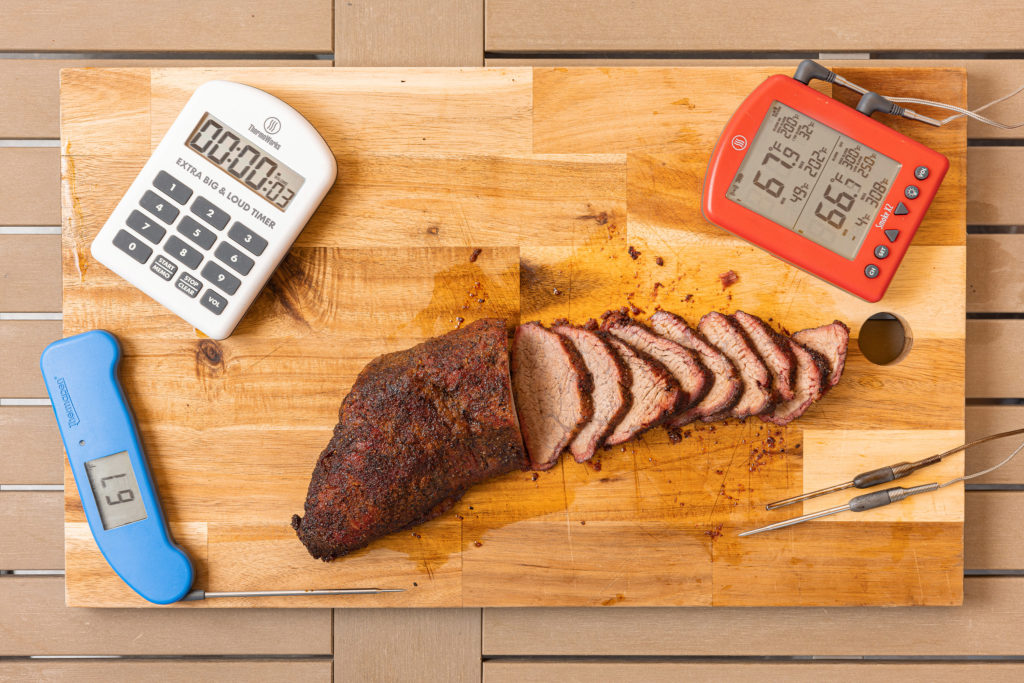
Get your temperature tools for this cook here!
Why cook tri-tip like brisket?
We love brisket, and we love cooking it. The challenge, the waiting, the expectation—it’s so fun! And the results are perfect for a party of friends and neighbors. But it’s not cheap. And it does take a long time to cook.
But what if we could get excellent brisket for a fraction of the cost, in a fraction of the time, without any trim waste? And what if we didn’t end up with several pounds of leftovers to vacuum seal after a simple family dinner? All of these things are possible if we make one simple substitution in our brisket cook: sub in tri-tip for the brisket.
How could this be any good? After all, tri-tip is a steak-like cut, right? Isn’t medium rare the best way to cook it? I’ve had dried-out, overcooked steak and it was not good. How could cooking tender tri-tip way past well-done possibly be good?
Yes, tri-tip is considered a steak-like cut and is usually served medium or medium-rare. It’s amazing on its own like that, but when you put it in a sandwich, it’s…less fun. You see, for something that is steak-like, there’s quite a bit of connective tissue in the tri-tip. And that means that there’s a lot of pulling and ripping and meat falling out of the bread and disappointment.
But when made with this style of tri-tip, BBQ sandwiches are quite perfect. The meat pulls easily apart, it is plenty juicy from the dissolution of what connective tissue there was, and its texture is phenomenal.
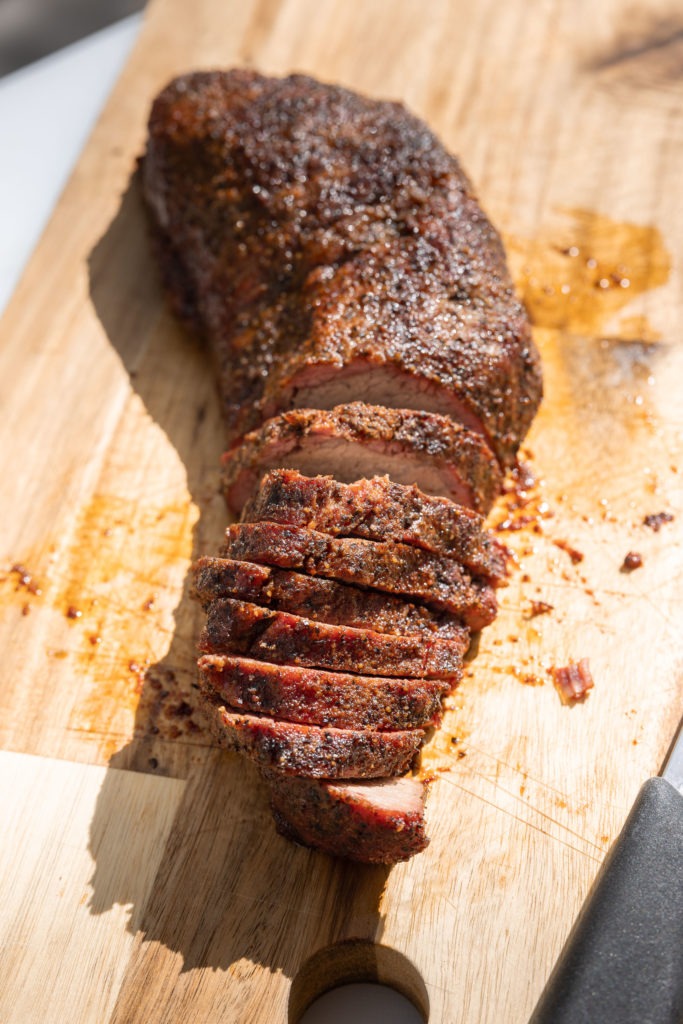
How to make brisket-style tri-tip 2
The process for brisketing your tri-tip is simple, but it needs careful monitoring and temperature control. We opted for a little more speed in our cook by smoking at 250°F (121°C) the whole time. If you have a pellet grill, as we used for this cook, set up your RFX GATEWAY or Smoke X2™ to monitor the temperature. Yes, a pellet smoker keeps a “constant” temperature, but it never hurts to make sure that it actually falls within the temperature range it’s supposed to, and look out for fuel outages.
The seasoned tri-tip is placed in the smoker and cooked for two hours to create a smoke ring, impart smoke flavor, and help form up the bark. After two hours the bark should be well-set and the meat should be about 160°F (71°C). If it gets to 160°F before the two hours have run their course, don’t worry, it will stall out and hold its temp somewhere in that range.
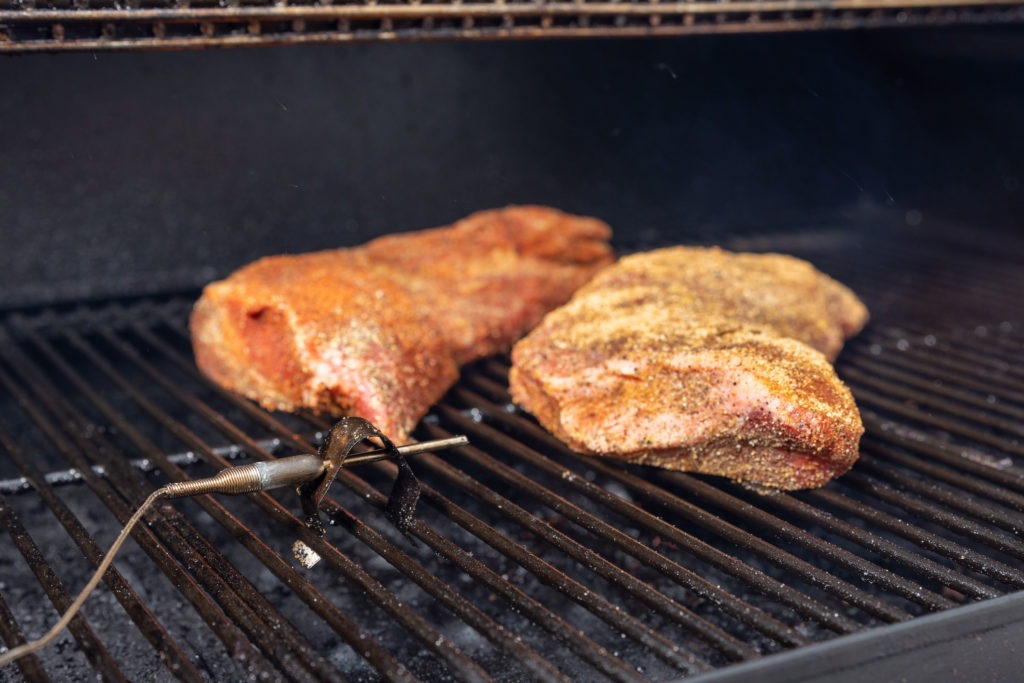
Once the bark is set, it’s time to wrap. Using pink butcher paper, wrap your tri-tips and put them back in the smoker, and increase the smoker’s temperature to 275°F (135°C). Now we start monitoring the meat’s internal temperature in earnest. We’re shooting for about 200°F (93°C) on this cook, so set your meat channel’s high-temp alarm for 200°F. Why not 203°F( 95°C) because we don’t have as much collagen to dissolve in tri-tip as we do in brisket.
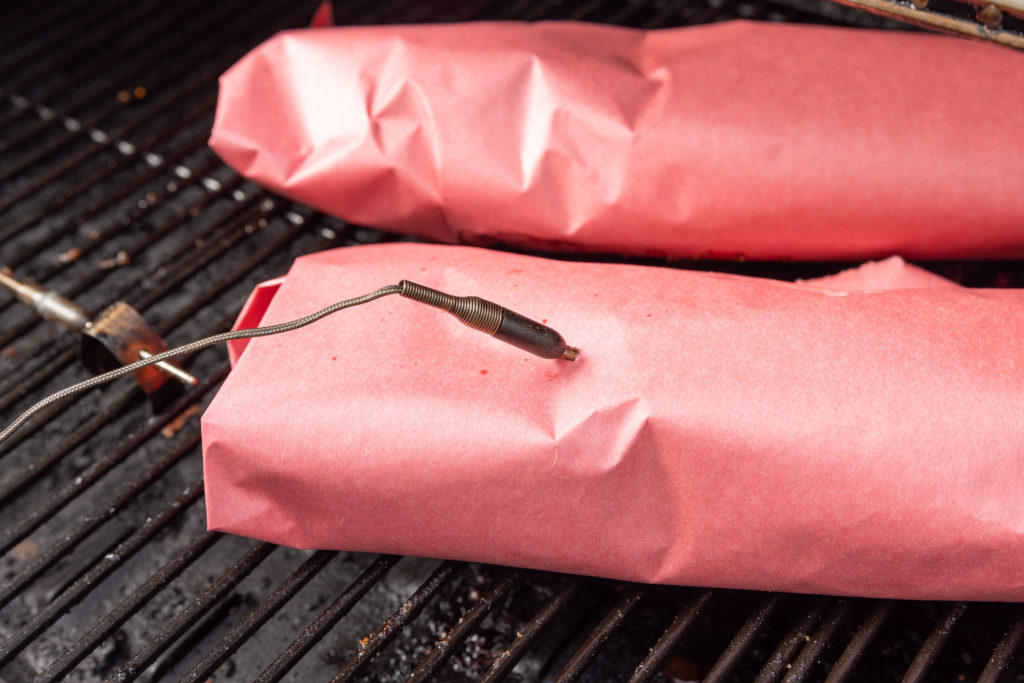
Cook the tri-tip until the internal temperature reaches 200°F (93°C). This should take about 3 more hours. Verify the doneness and the tenderness with your Thermapen® ONE and if you don’t have any cold spots and the meat is tender, get it off the heat. A rest is a good idea here, but 15 minutes or so should do the trick. Unwrap the tri-tip and slice it up.
Results
When we sliced into our tri-tip we found meat that was soft, yielding, beefy, well seasoned, and oh-so-tender. It held together just enough for the finger-bend test, and pulled apart easily with the slightest tug of the teeth. Cutting into the lateral-slicing part of the meat (tri-tip has to be sliced in two directions) gave us pieces that are almost indistinguishable from brisket. The fat seams were beautifully rendered and the connective tissue that usually gives tri-tip the toughness/chewiness that it does have was gone. Blindfold me and ask if I’m eating brisket, there’s a good chance I’ll say yes, and that it’s excellent brisket.
How important is temperature in this process?
We cooked two tri-tips in this cook and, for some reason, one of them only got up to about 170°F (77°C). We wondered if being well overcooked, but still underdone for brisket, would yield the same results. It did not. The meat was chewy, dry-feeling, and just not good. Getting all the way up to 200°F (93°C) really matters, so don’t forget to probe the meat while you cook it!
(This also goes to show that temp matters more than time. The two pieces were fairly similar in size and were put on the smoker at the same time, but one was nowhere near done when the other was ready.)
The lesson here is plain: if you’re going to overcook your tri-tip, really go for it. But go for it with purpose, intent, and care. If you do, and you get it all the way up to 200°F (93°C) you’ll be rewarded with smoked meat that is almost indistinguishable from some of the best briskets I’ve ever eaten. Try it out this weekend, you’ll love it. Happy cooking!
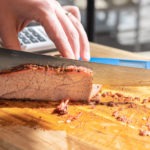
Brisket-Style Tri-Tip Recipe
Description
Modeled after methods from Susie Bulloch and Malcom Reed.
Ingredients
Instructions
- Preheat your smoker to 250°F (121°C). Use the air probe from your RFX GATEWAY or Smoke X2 to keep an eye on the temperature. Set the high-and low-temp alarms 25°F (14°C) on either side of 250°F.
- Smear the mustard all over the tri-tip to act as a binder.
- Season the tri-tip well with BBQ rub. I like something a little spicy on it, but use what you like.
- Place the tri-tip in the smoker. Insert an RFX MEAT or high-temp cooking probe into the thermal center of the meat and set the high-temp alarm for 160°F (71°C).
- Set a timer for 2 hours and smoke the meat.
- When the timer sounds, or the meat 160°F (71°C), whichever comes first, check that the bark is properly set on the meat.
- If the bark is set, wrap the meat in butcher paper.
- Place it back in the smoker, re-insert the probe into the meat, and set the high-temp alarm on the meat channel for 200°F (93°C).
- Increase your smoker temperature to 275°F (135°C) and adjust the high- and low- temp alarms accordingly.
- Continue to smoke, about 3 more hours, until the high-temp alarm sounds on the meat channel.
- Verify the doneness temperature and texture with your Thermapen ONE.
- Remove the meat from the smoker and allow it to rest for 15 minutes.
- Unwrap, slice, and serve!


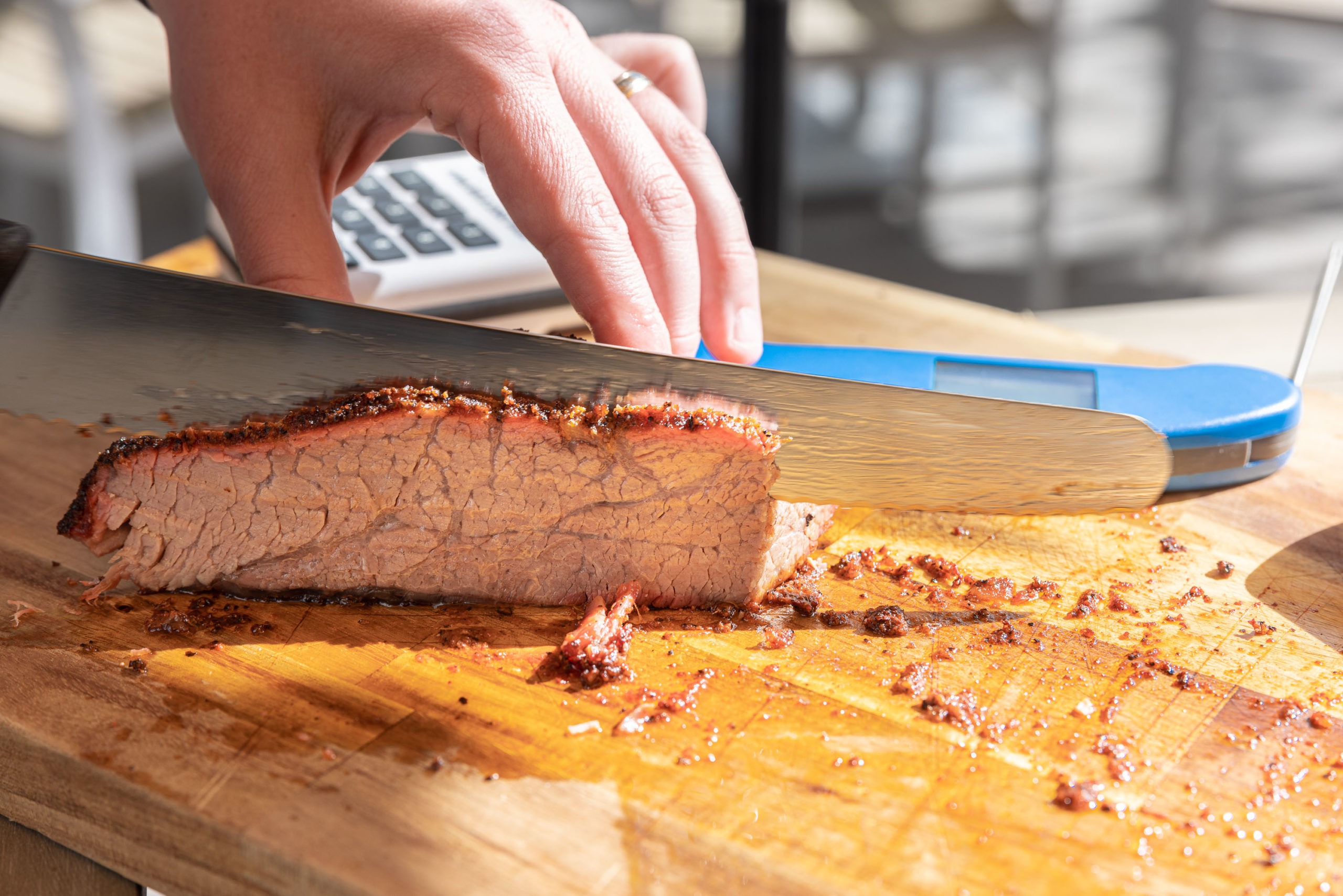
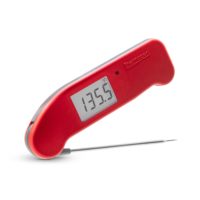
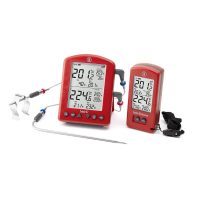
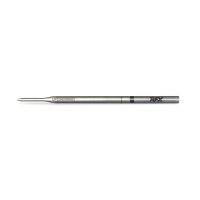
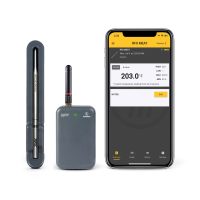
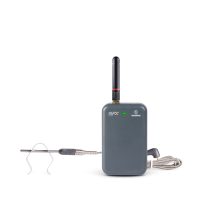

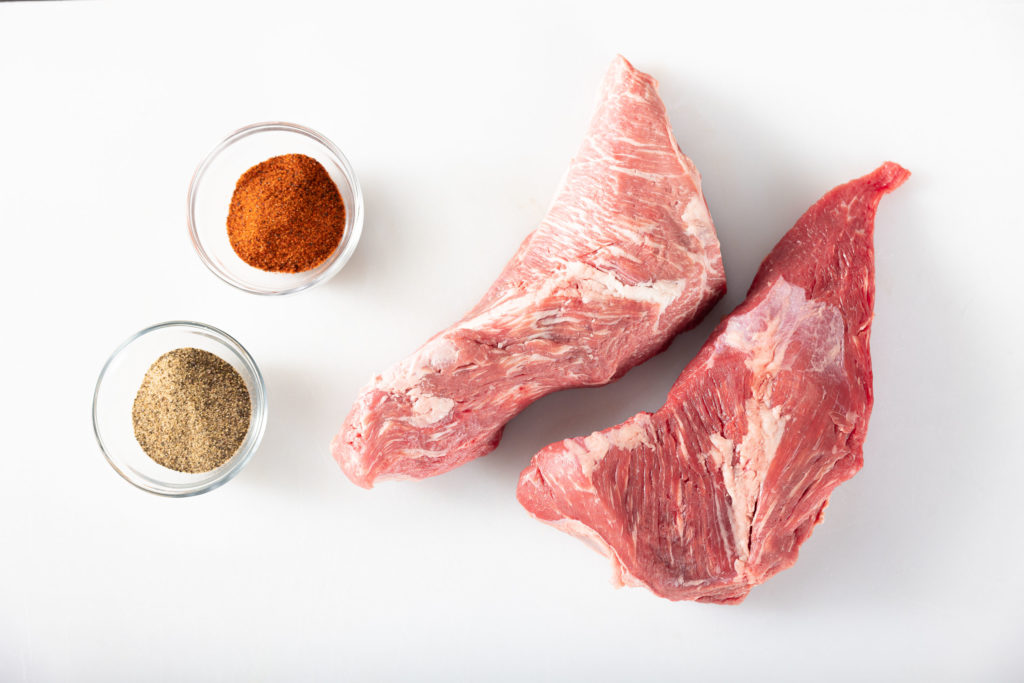
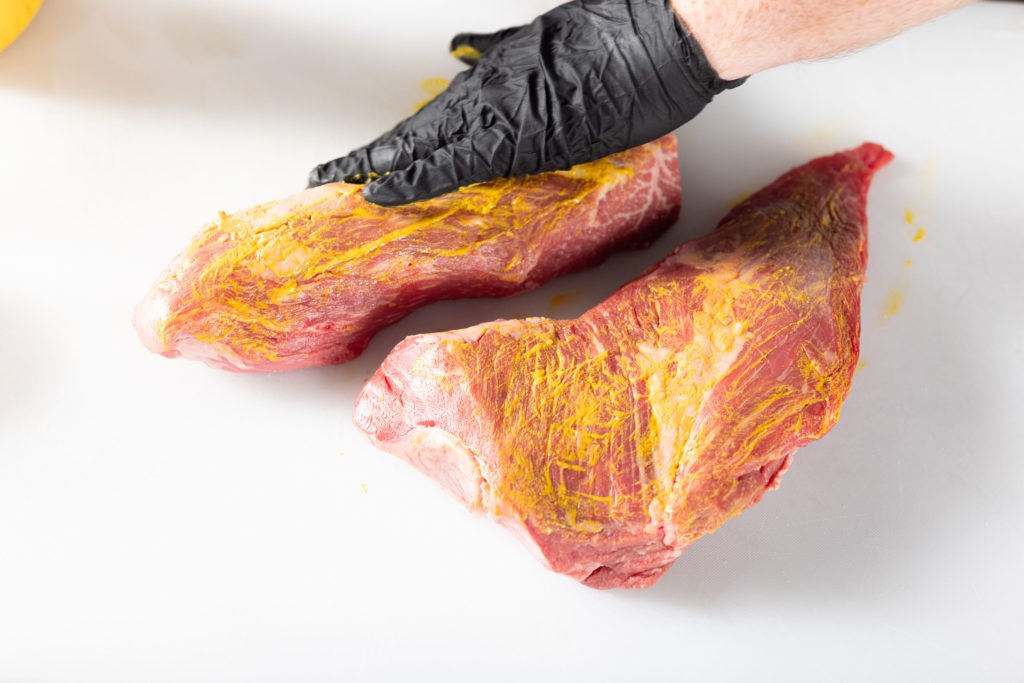
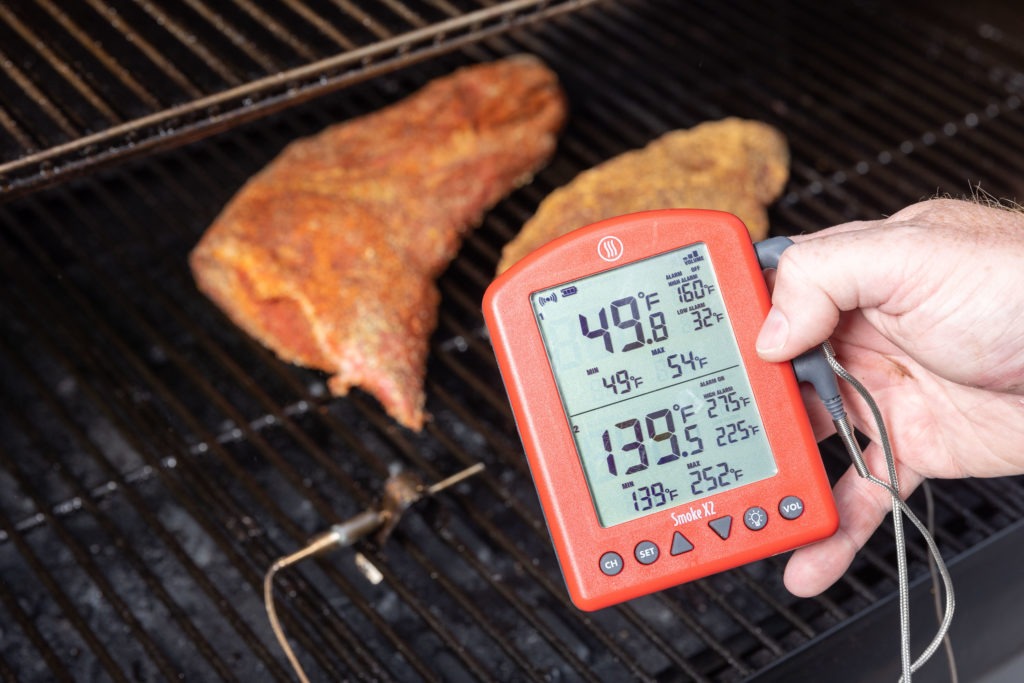
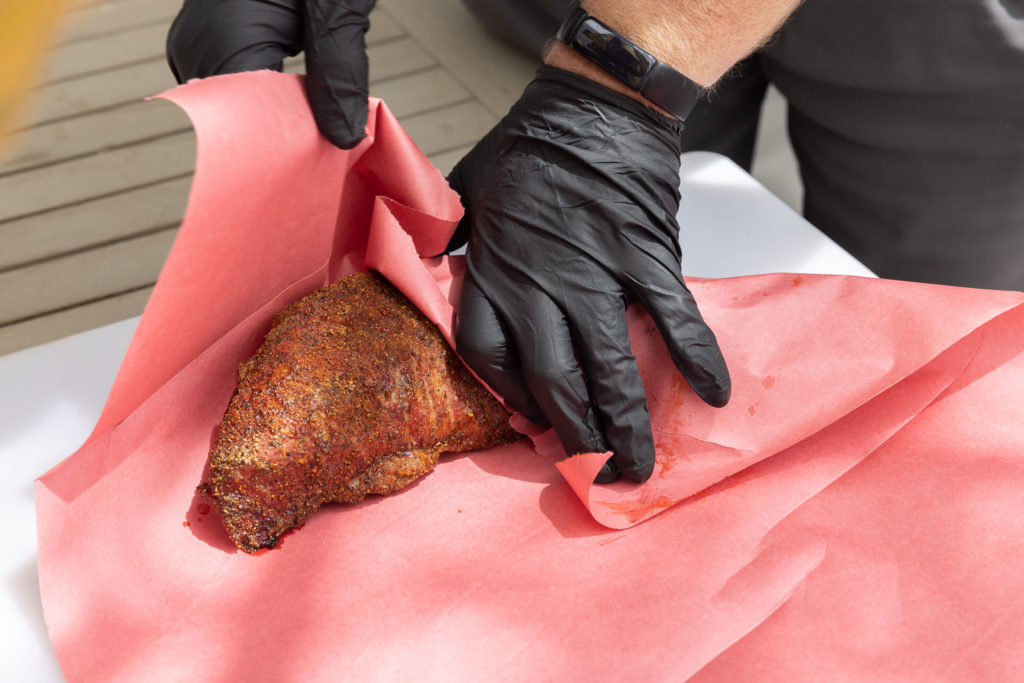
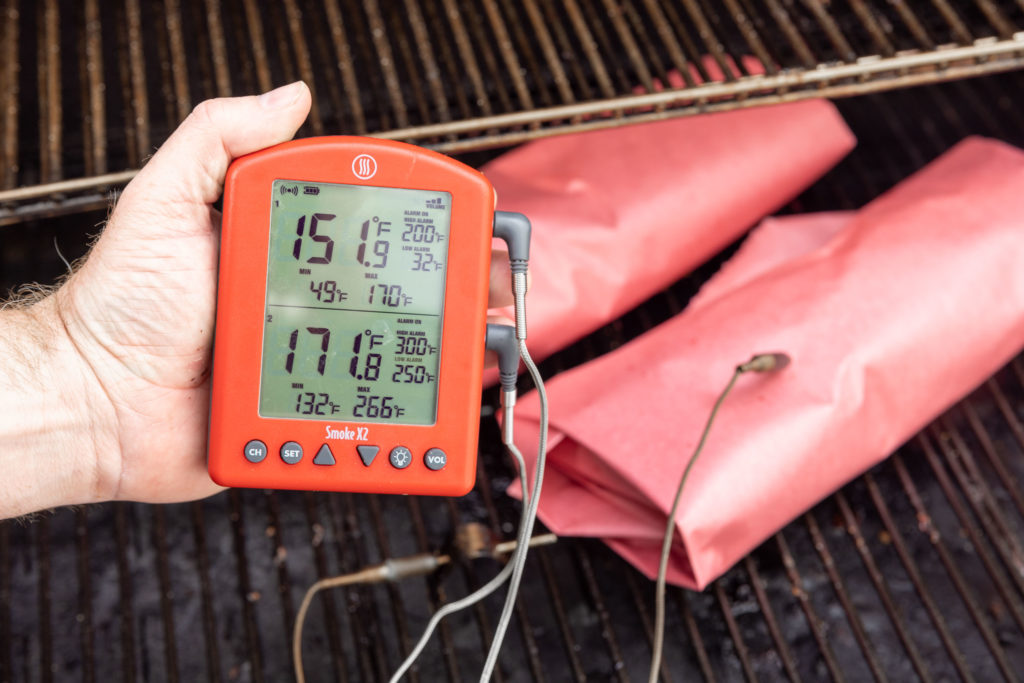
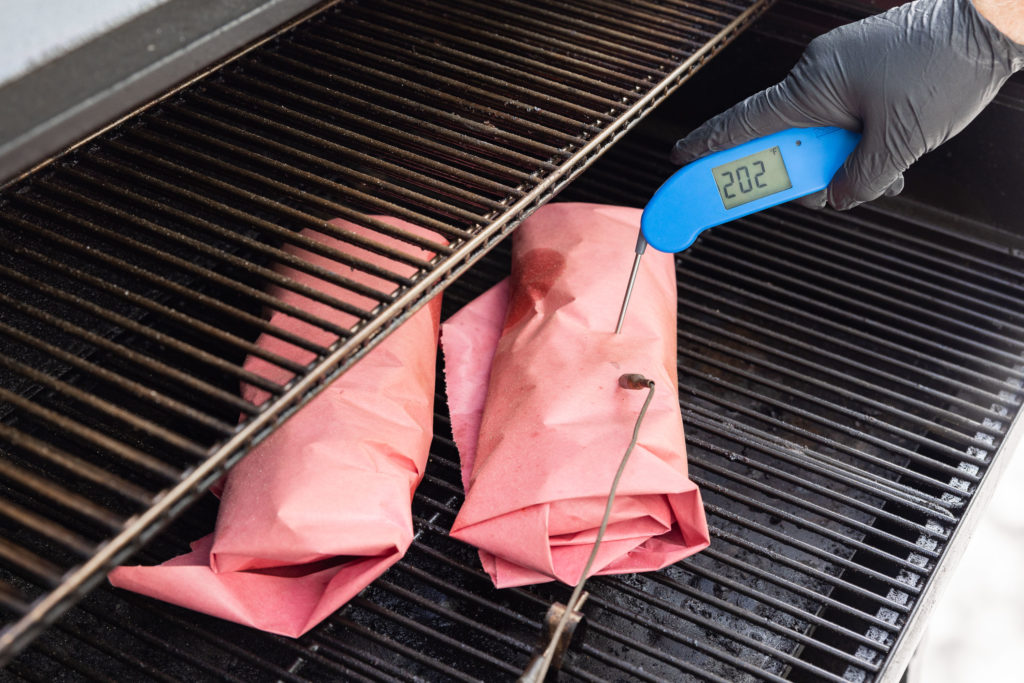
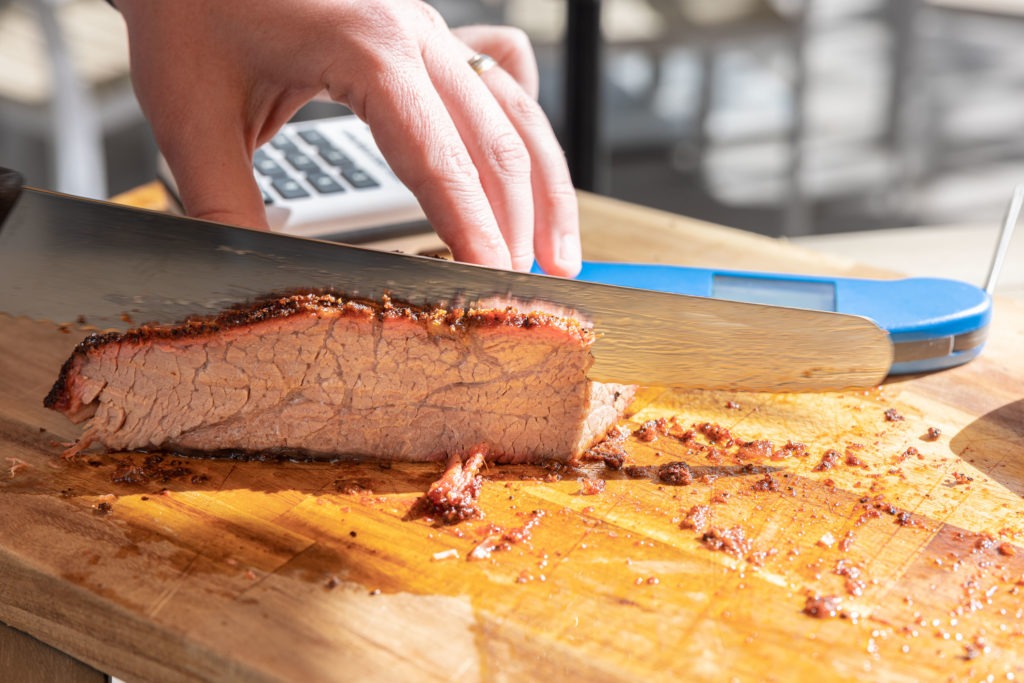
Can you do any of this in an electric oven? If yes, HOW?
You can’t smoke it, but you can certainly cook it at the exact same temperatures and get a delicious result. It will just taste a lot more like roast beef.
Do we wrap it for the first part if we put it in an oven?
You follow it exactly as written, but use an oven instead of a smoker.
Same oven temperatures and timing principle. Add some liquid smoke flavoring to the rub down.
Most pellet smokers generate very little smoke over 230 degrees. I would think that your recipe needs to be adjusted to do the initial cook at 225 until 160 degrees, then wrap and put the temp up to 275 until done.
It depends on your smoker, of course, but you can also use a non-pellet smoker to great effect here. The temps you suggest are great!
With the Traeger Ironwood 885, you have a super smoke setting that works under 225 degrees. What would be the directions if I wanted to use the super smoke option and cook it at 225 initially and then raise it to 250 0r 275 later?
Basically, the instructions are the same, but you might give a longer smoke up-front. I’d still go until you hit the stall, or close to it, at about 155–160°F, but it will take more time. I’d add another 60–90 minutes to your planning for this step. . Then wrap and turn up the smoke.
I am looking forward to trying this recipe.
Can aluminum foil be substituted for the pink butcher paper? Or what is the advantage of the pink butcher paper?
Thanks,
Yes, and it will cook a bit faster. But it may also dampen the crust more, literally.
Parchment paper will work also. Fool keeps the outer layer moist and may lose the crisp bark.
I was worried about this thinking it can’t work like that. I followed the recipe as temp goes but my tri tip was preseasoned. But to my surprise it was AWESOME. Had company over and they all raved on how tender it was. This is for sure a keeper recipe.
I was as surprised as you! My go-to from now on.
Tried this recipe today, worked perfectly! This will be my go-to method for tri tip from now on!
Fantastic!
Question: What size were your tri tips. I had a local butcher cut me one that was 4 lbs. I cut it in half, about 1 1/2 in thick. On my Grilla pellet smoker it took ~ 4 hrs to get to 160. Wrapped in butcher paper set temp to 275. 4 hrs later still have 5 degrees to go.
Ron M.
Ours were closer to 3 pounds. That is a long time…seems strange.
I was really looking forward to this recipe. After 6 hours mine was only 160. As I had company over that had to leave we ate it as is. Definitely not brisket good. My first smoking fail.
Oh no! So sorry to hear that. It sounds like it stalled at 160°F, which is expected, but that the wrapping must not have pushed it through the stall. Maybe next time try foil instead of paper, as it creates a tighter seal to keep the steam in.
Followed this recipe to the letter on a Big Green Egg + Smoke X2 + Billows and it came out great! Will definitely be doing this again many times.
As great as it was, I’d like to shoot for a thicker, crispier bark for the next round. Any advice for this specific recipe?
I just smoked my second one of these. Both came out awesome with a nice strong brisket flavor. My smoker barely gets to 250 deg. Once it was wrapped at 160 deg internal, I finished it in a shallow pan the kitchen oven at 275. Time was 6 hours with my new Signals.
Best recipe we’ve had for smoked tri tip! Brought them to 201-203°. Marinated in my own marinade for a day.
My local butcher is selling choice tri-tip for $13.99/LB. Whereas they sell choice brisket for $6.99/LB. Seems like pricing is out of whack.
Per pound, yes, but not per whole item. We don’t usually “need” a whole brisket, but a tri-tip’s worth of it is perfect for a family dinner. So the total cost of a small tri-tip os lower than the toal cost of a huge brisket. That’s what we meant.
Well I just have to say, it was the the most tender Tri-Tip I have ever done. I was a little apprehensive of taking it to 200 deg. But I got to 160 deg in about two hrs on my GMG, Daniel Boone. Wrapped it in butcher paper and hit the 200 deg.in another 2 hrs. So in total was finished in 4 hrs. total. Kept my temps close to the 250 and 275 deg as in the recipe. Let it rest, and was a little scared, that it cooked faster than the 5 hrs. in the recipe. But WOW it was so tender, was a big Tri 3.5 lbs. Now to attempt a Brisket, which I’ve never had any luck with.
Fantastic!
Hey man, after wasting a lot of good meat trying to replicate my local BBQ place, this recipe was the best so far!! Tried 130/145/160/searing/couple Crock Pot recipes but just couldn’t really chew any of them. (my teeth are pretty bad lol) This one was really really good and super close to the local BBQ place tri tip.
The only issue I had was that this turned out a bit more dry than I was hoping. I really don’t want to keep wasting good meat so I was wondering, do any of the following ideas make any sense? or do you have any tips for getting it a bit more juicy?
-Should I get a Prime cut instead of Choice? (maybe even look for a cut with fat cap still on?)
-Try placing a few strips of butter on top before wrapping
-Only go up to 180 instead of 200?
Yes, yes, no. A prime cut will do better, a little butter never hurt anything, but only going to 180 won’t give you quite the same effect, I think. Maybe stop at 190 or 195°F, but I suspect 180 will be too low. You could also inject the tri-tip, which would also add more flavor.
This one is definitely on my list to do (and soon). One question Martin … do you think there would be any benefit dry brining the tri-tip with salt, pepper (and maybe garlic) the night before? … or just wait and season same day?
Thanks as always for the great recipes and expertise you share.
Dry brining like that will absolutely be delicious! By all means, do it!
Has anybody experimented with injecting the tri-tip with Wagyu beef tallow, either at the beginning of the smoke or at the point of wrapping it?
I have not. Anyone else?
I don’t have a smoker. It is either our convection oven, roaster, or portable electronic oven. I’ve zeroed into tri-tip and have had great luck so far. I have gotten some wonderful results with various rubs, lemon spices, and my life-time mania for Lawry’s Seasoned Salt with the exterior well browned.
In my ignorance, can I use your receipt to get the tenderness without the smoking, but matching your temperature regimen? Or am I barking up the wrong tree?
You absolutely can! And it should be delicious.